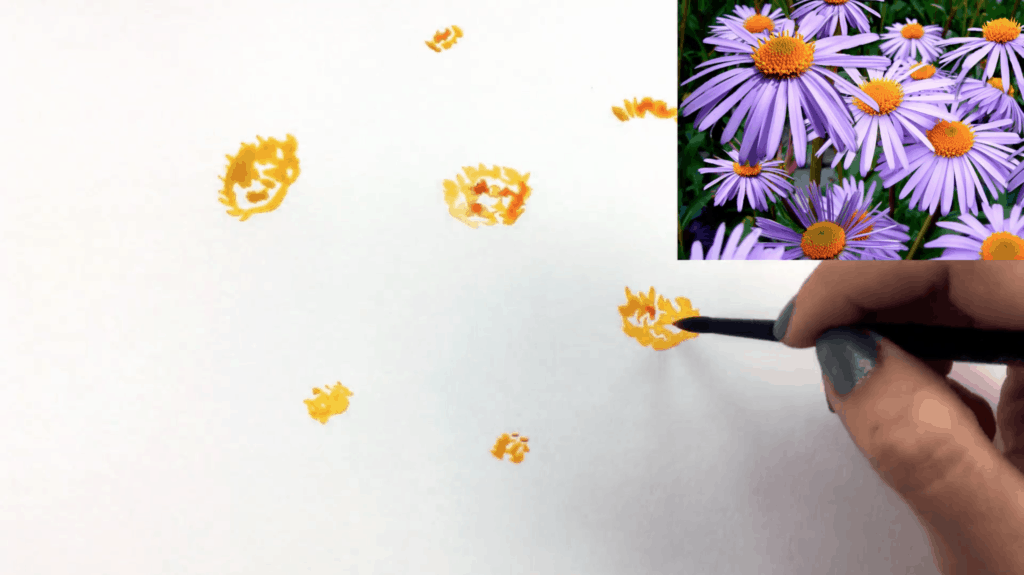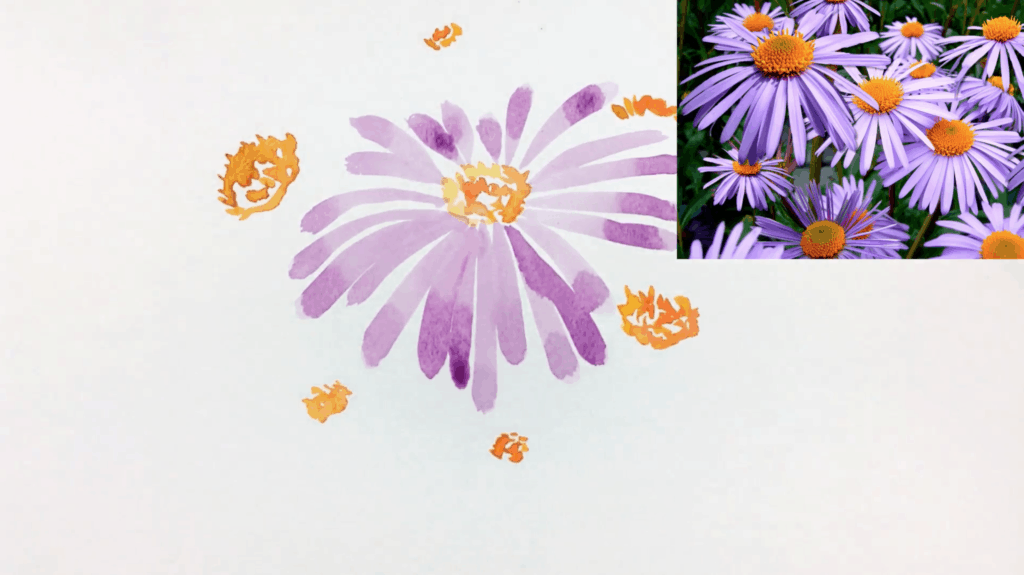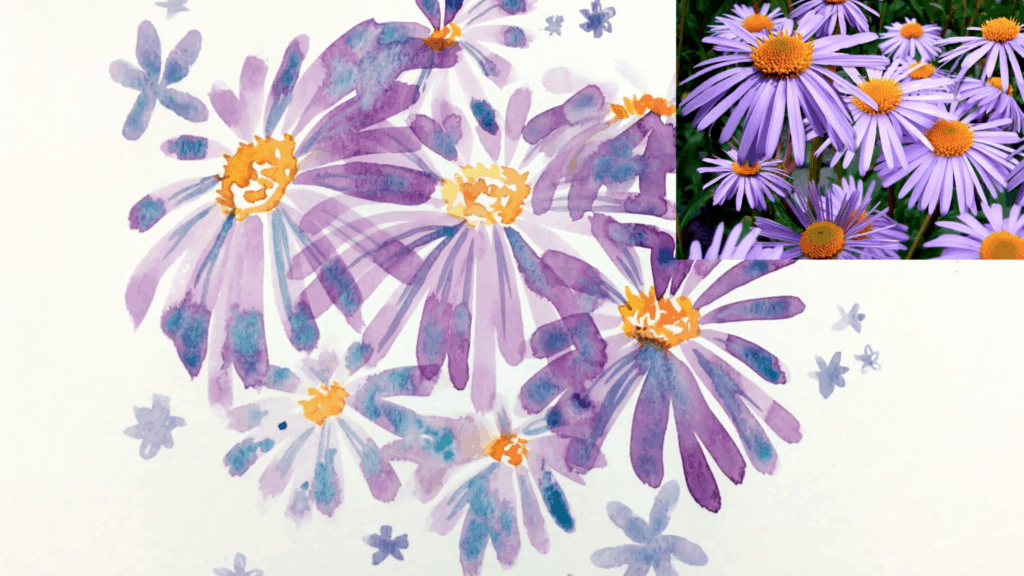If you’ve been wanting to experiment with some new techniques or change up your workflow, we’ll go over some tips and tricks you can use creating illustrative, watercolor pieces.
The Full Picture
First, pick out a reference image to work with.
In this demo, we’ll be working with a photo of some flowers. It can seem overwhelming trying to work with a busy composition, but we’ll help you break it down into some simple steps.
It’s always helpful to start your watercolor pieces with an underlying sketch, but we’ll try a more abstract, looser approach. When you look at the reference image of the flowers, you can see how each flower is pointing in a different direction. We can focus on blocking out one specific part of the flowers at a time.

In this case, we’ll start by defining the center of the flowers while incorporating various brush sizes and angles. It’s ok if your initial marks don’t look exactly like your reference image. Instead, try thinking about creating your own version of the image. Keep your brush movements gestural and light to add variation to your strokes.

Next, we’ll move on to the petals. You can use simple brush strokes to imitate the flower petals. Using a medium-sized brush, lay down your paint in a sweeping motion. Add some variation for each of the petals so you can get more depth and perspective in your painting. Keep in mind, you don’t have to make an exact copy of your reference image, but try to capture the general shape of an object.
You can even try studying images that include various angles. Pick out some references that have different perspectives so it can help make you work feel more 3D and not flat. Using reference images can generally help to bring some structure to your sketches.
Tips for Creative Backgrounds
Now let’s take a look at different ways to add creative details to your backgrounds.

By adding smaller details to your backgrounds, you can make your compositions feel more balanced and well-rounded. In the example we’ve been referencing, we’ve added some more flowers in the background to make the entire painting feel complete.
Another compositional trick you can use is to add abstract blocks of color. To do this, first paint the main focus of your piece, then while the paint is still wet, get a clean brush and dip it into some water. Then pull the wet paint with the brush around the background. By doing this, you can create a subtle backdrop for your main subject while also keeping the color palette consistent.

You can also try experimenting with non-watercolor materials to add detail and contrast in your work. Pouring small amounts of rubbing alcohol onto wet paint creates some beautiful, abstract textures once its dried. You can also try using salt (can be any kind, although larger grains of salt absorb paint better) to add granular textures to your work. Just sprinkle some salt onto wet paint and let it dry overnight. Once you brush off the salt, you’ll see that the salt absorbed some of the paint to leave some interesting textures.
Using ink to gel pens on top of your dried work is also a great way to add details or highlight certain aspects of your work.
Painting the background first can also lead to some unique compositions. In this case, try sketching the main focus of your painting, then fill in the negative space around it. Pick a handful of harmonious colors to work with and make sure to use a lot of pigment onto wet paper.
In the end, don’t be afraid to experiment and play with your work — try out different techniques and materials, combine things, layer paint on top of each other. What new techniques will you try out?
This content comes from Session 2 of the course Fun and Loose Watercolor Florals, Leaves, and Butterflies. Join and learn to paint more creations below:

Fun and Loose Watercolor Florals, Leaves and Butterflies
Kadenze Academy